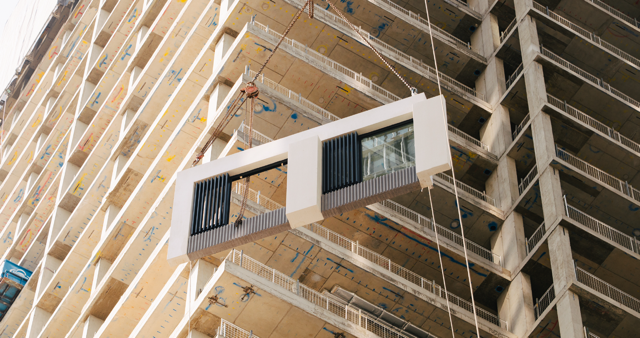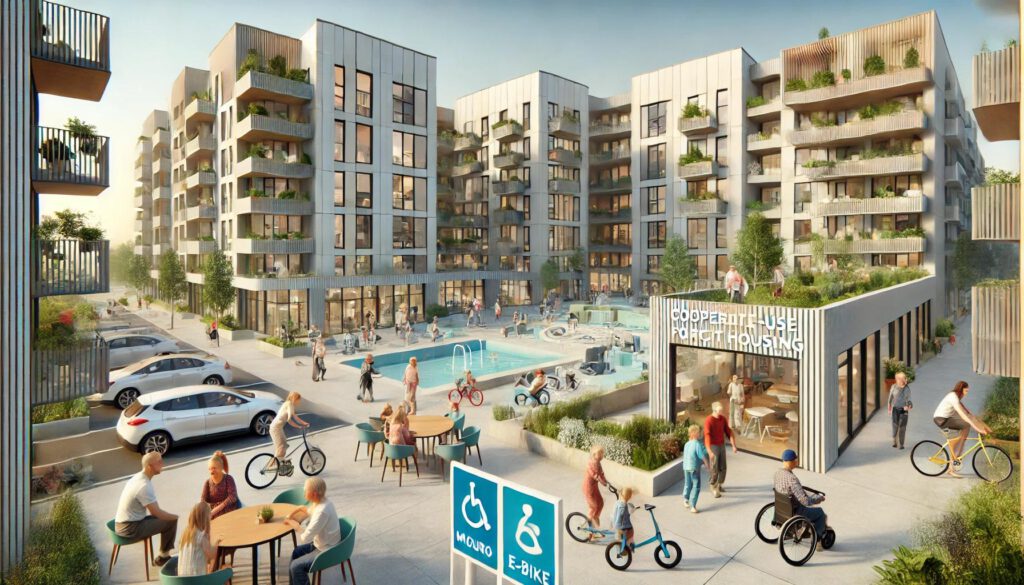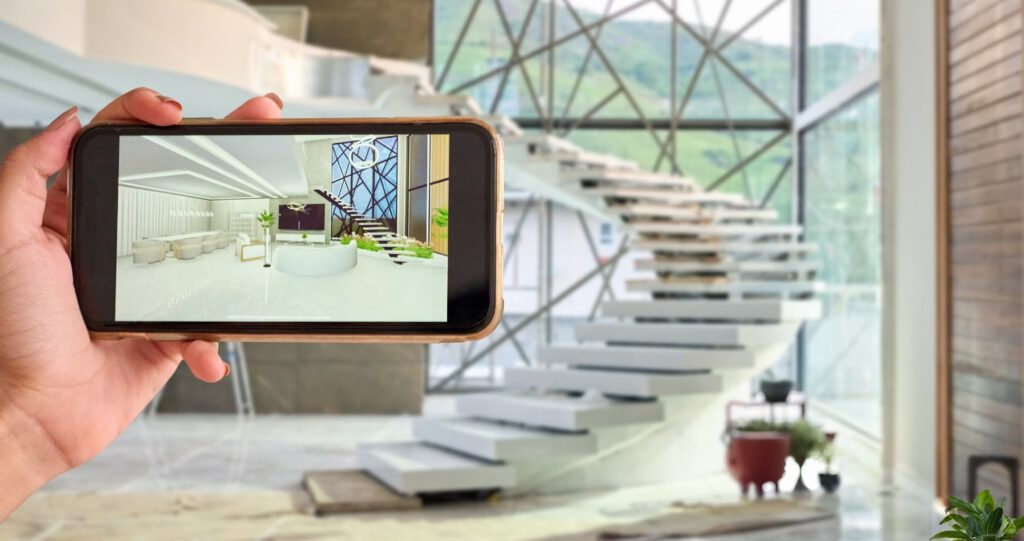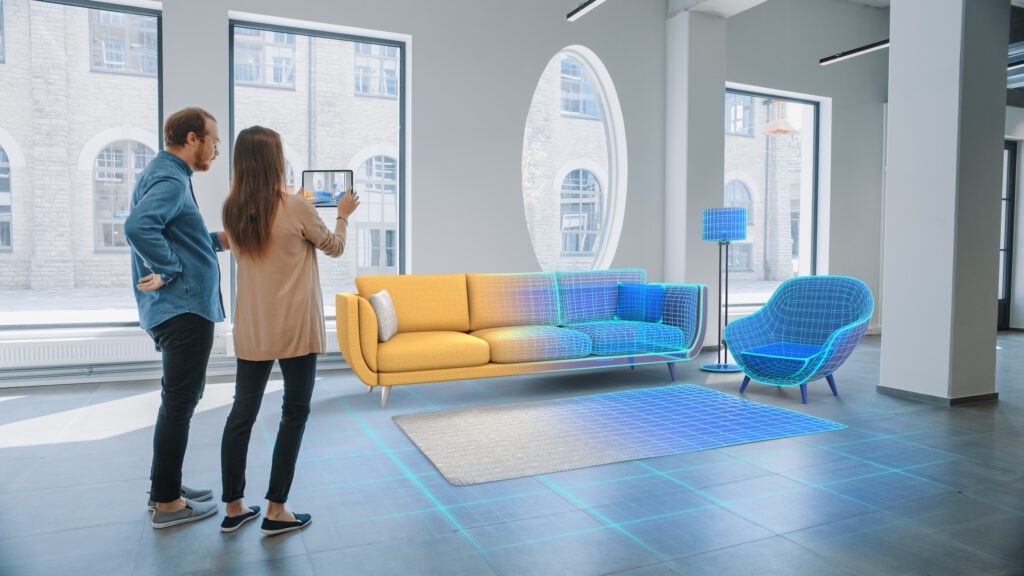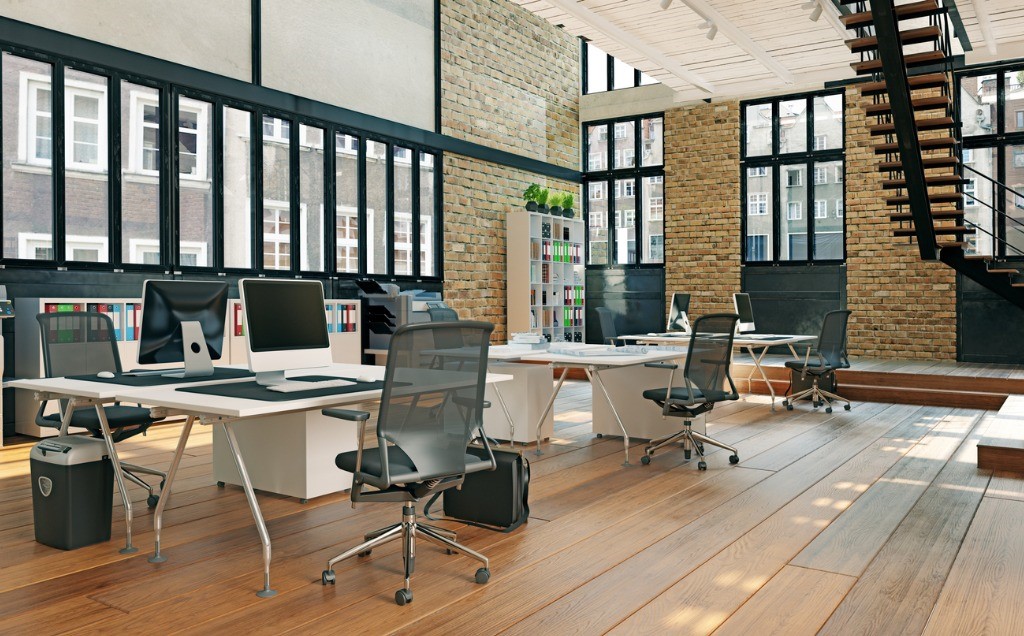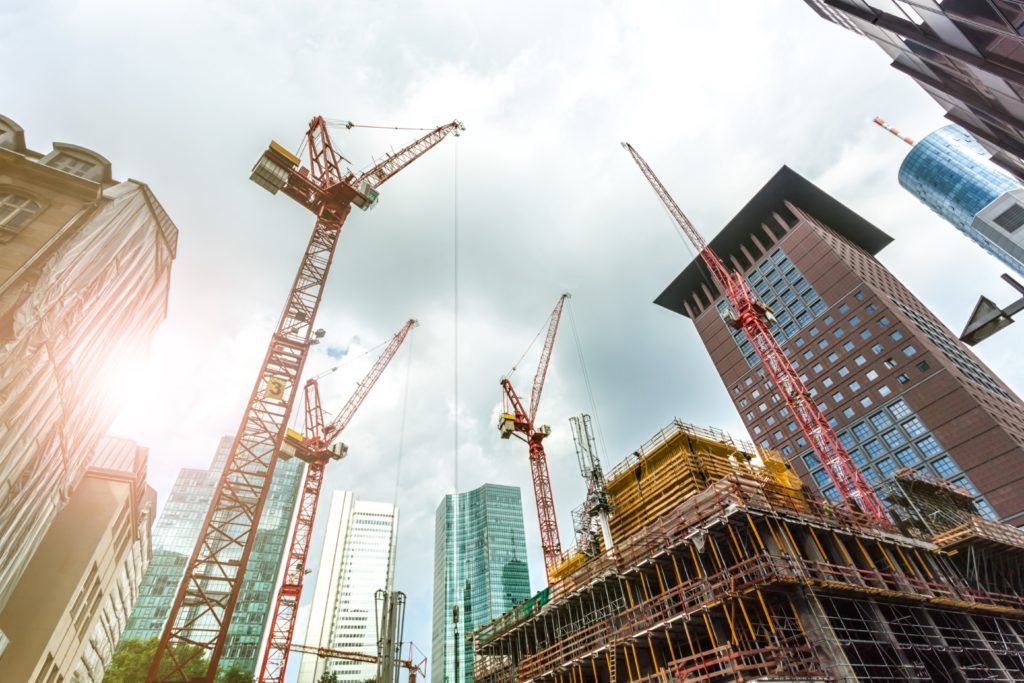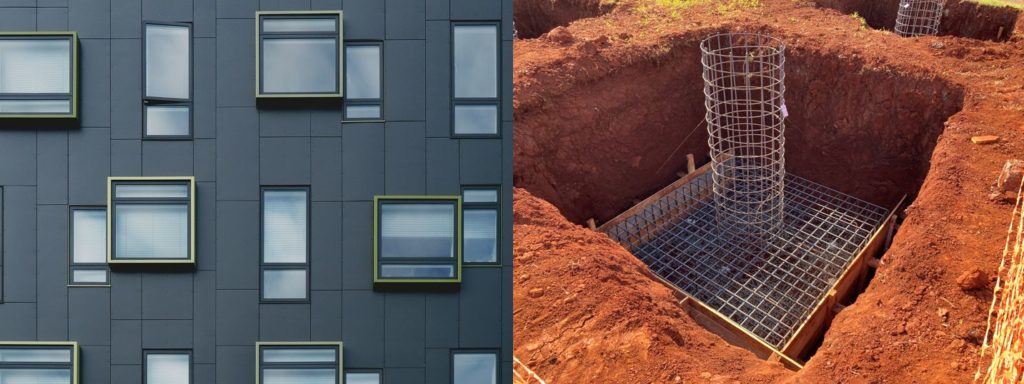In the wake of Artificial Intelligence, another technology is about to become a hype: the Metaverse. Simply put, it is a ’walk-in’ version of the internet. This metapher also casts a light on its impact on the construction and real estate business: buildings, rooms, and each construction detail can be experienced in an extremely realistic way. We already took a first glimpse at the opportunities in an earlier Valdivia Expert Tip . The Metaverse in its entirety, now, is a technology that is just ideal for real estate marketing.
’3D Internet’ – The Key Terminology
Just like the internet itself, the Metaverse is a protocol for data transmission, creating a network of all connected computers. You can use it with your PC or smartphone. However, in order to enjoy the full 3D experience, you will need to have AR or VR-compatible hardware:
- Augmented Reality (AR) literally augments the real world through digital images. AR glasses, for instance, can display data about a building that you are looking at. Or you can see if a certain interior design element, that you would like to have, matches with the real room.
- Virtual Reality (VR) allows its users to enter a virtual world. With the help of the right gear (VR glasses, data gloves, etc) you can walk around a building or compound even before they have been built.
In order to use the world of VR, you first choose an Avatar for personal representation. This way, you can move around freely and interact with other people’s avatars or with AI-controlled figures. It is a very real-life experience, including the option to purchase virtual property, protected data objects, so-called NFTs (non-fungible tokens). As early as in 2021, Facebook created a video with some first insights into the visual appearance and the applications of the Metaverse.
The Metaverse: A Tangible Experience
To date, there is only a relatively low number of Metaverse users. Yet, public applications, such as Sandbox and Decentraland already exist, and interest in the Metaverse is rising among enterprises as well. According to a survey of Munich-based strategy consultancy Nunatak, 50% of enterprises are currently developing projects to explore the possibilities of the Metaverse.
However, there is no need to rely on existing platforms in order to take advantage of this new technology: one of the things that make the Metaverse so attractive for enterprises is the fact that they can build their own applications. Nunatak gives a few examples – dating back to early 2023: Adidas is testing new stores in the Metaverse, BMW optimizes manufacturing processes, and Deutsche Bahn uses VR for maintenance.
More than Just a 3‑D Display Window
The Metaverse is much more than a planning or marketing tool. Job hunters can perform virtual practice tests, global staff can come together in one room for conferencing or prepare for a new job at another site. The Metaverse will make you more attractive not only as a supplier or provider, but also as an employer.
And so adopting early is worth it. Your enterprise can gather relevant insights with experiences in the Metaverse – a few examples:
- Efficiently using AR and VR technology
- Virtual representation of your enterprise, properties and projects, including visualisation of alternative options in structural engineering or architecture, and more
- Support with the working environment
- Direct contact with added value for clients, staff, and job candidates
A Successful Start
Without a doubt, the Metaverse is full of fascinating new opportunities, specifically for construction and real estate businesses, e.g. for presenting their services, projects, etc. There is two things you should keep in mind when introducing this new technology: It is highly recommended you make sure that the way you use AR and VR matches your overall corporate identity and does not come across as too playful. Additionally, your budget should include funds for operations and maintenance ensuring that your first steps in the Metaverse do not come to a halt all too soon. In any case, it is worth trying: This new medium is ideal for our industry, and even with smaller applications: Now is the time to quickly earn a reputation as an early adopter and highly innovative enterprise.




